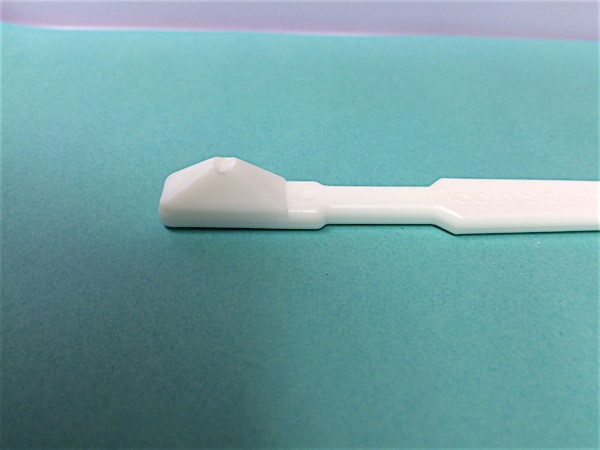At Ocean Microendodontics, we utilize clinically proven, advanced technologies to assist in diagnosis and treatment of endodontic disease. However, the value of an instrument lies not in the technology itself but in the clinician’s ability to use it. For example, did you know that a simple piece of plastic could tell us that your tooth is cracked? Meet the Tooth Slooth. Like Kleenex and BandAid, the name “Tooth Slooth” is commonly used in dentistry to refer to a product of a company with the same name. That product is little more than a glorified stick of plastic! It is a very simple, low-tech tool that, when used properly, can test for a specific kind of crack.
How it works: The Tooth Slooth has a wedged tip that is designed to rest between the cusps of posterior teeth. When the patient is asked to “bite” on the Tooth Slooth, the plastic wedge pushes the cusps away from each other. When the patient is asked to “release”, or “open”, the plastic wedge releases the force, and the cusps are allowed to rest again. In a healthy tooth, these forces elicit no discomfort at all. In fact, these same forces are the same one would use to bite into an almond. Some patients experience pain on “biting”, which indicates inflammation of the tissues supporting the tooth. This can be caused by many disorders that would need other tests to be properly diagnosed. Other patients may experience a sharp pain on “release”. This pain on “release” is pathognomonic for a crack that goes into the dentin of a vital tooth. (The word pathognomonic describes a finding that is specifically characteristic or indicative of a particular disease or condition). In other words, if you have that sharp pain on release with a Tooth Slooth, you have a cracked tooth!
The good news is that there is available dental treatment for cracks that are detected by the Tooth Slooth in this manner. Many times all that is needed is a crown to keep the cusps from flexing apart during chewing and to keep the crack from propagating further down the tooth. Sometimes, endodontic therapy is needed (depending on the results of other diagnostic tests) (1). It is important to follow through promptly with treatment recommendations made by your dentist to avoid worsening of the crack. If nothing is done to prevent worsening of the crack, it has the potential to worsen to the point where nothing can be done to save the tooth.
Cracks vary in depth and location (2). This article has addressed only a very specific instrument used to diagnose a very specific type of crack. If you have a crack, we at Ocean Microendodontics will discuss with you your treatment options as well as the prognosis of that treatment.
- Krell K, Rivera E. A Six Year Evaluation of Cracked Teeth Diagnosed with Reversible Pulpitis: Treatment and Prognosis. J Endod 2007; 33:1405-7.
- Turp JC, Gobetti JP. The Cracked Tooth Syndrome: An Elusive Diagnosis. J Am Dent Assoc 1996; 127:1502-7.
Thanks for visiting us at Ocean Microendodontics of San Diego!




